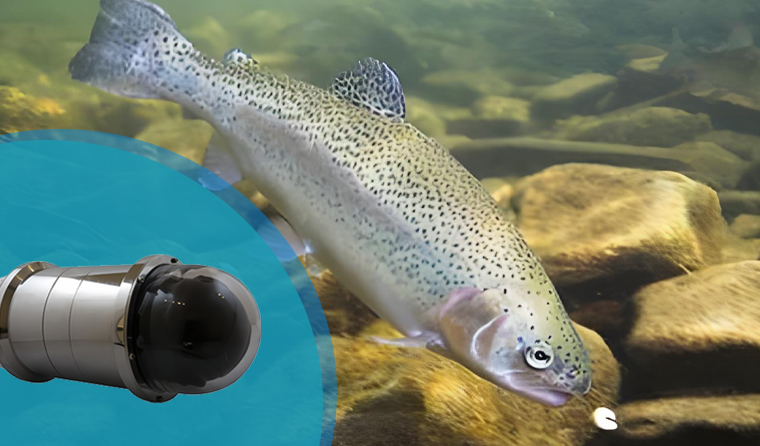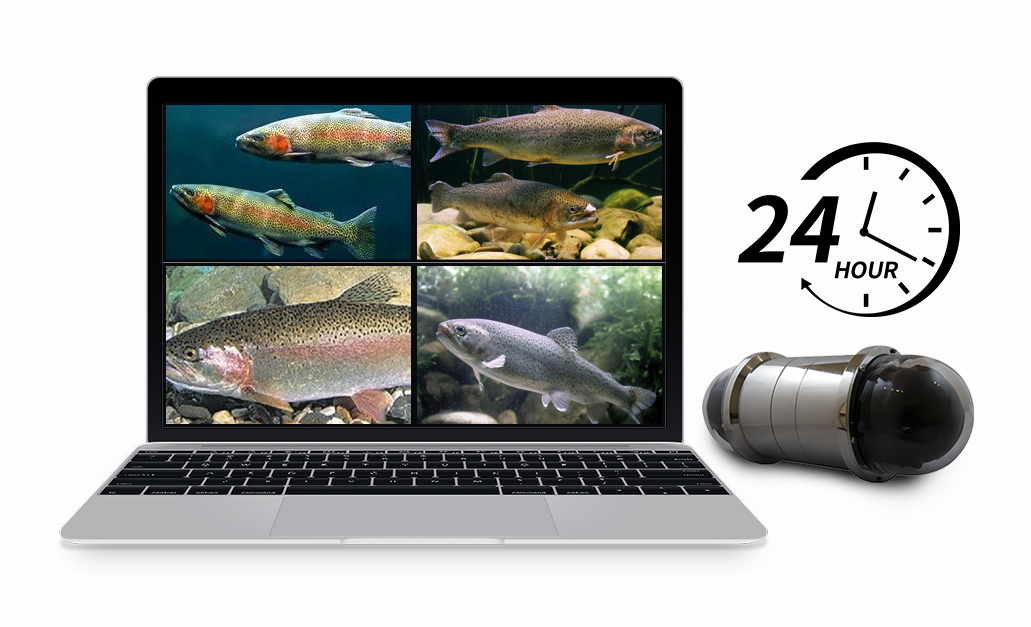The Role of Underwater Aquaculture Cameras in Rainbow Trout Farming
Hits: 304 Time: October 28,2025

Underwater aquaculture cameras are key tools for improving management efficiency and reducing risks in rainbow trout farming. They address the blind spots and inefficiency of traditional manual observation, with core functions focused on three dimensions: real-time monitoring, health management, and environmental regulation.
-
School Activity Monitoring: Cameras enable visual observation of rainbow trout’s swimming patterns and aggregation. This helps identify abnormal behaviors (such as surface gasping, scattered distribution, or erratic swimming) and detect oxygen deficiency or stress responses in a timely manner.
-
Precision Feeding Control: By observing the feeding enthusiasm of fish schools through video footage, over-feeding (which causes water pollution) or under-feeding (which affects growth) can be avoided, thereby reducing feed costs.
-
Reduce Manual Inspections: There is no need for staff to frequently go into the water or use tools for inspection. This is particularly suitable for aquaculture scenarios that are difficult for manual full coverage, such as deep-water cages and large ponds, saving labor input.

-
Early Disease Identification: Cameras clearly capture changes in rainbow trout’s body color and shape, such as gill rot, body surface ulcers, or deformities. This detects diseases earlier than traditional sampling inspections, allowing more time for treatment.
-
Growth Tracking: Regularly recorded videos help assess the growth rate and size uniformity of rainbow trout. This evaluates aquaculture effectiveness and enables timely adjustments to farming plans (such as cage separation or feed formula optimization).
-
Record Traceability: Stored video data can serve as aquaculture logs. If large-scale mortality or quality issues occur later, the data allows tracing back to identify causes (such as sudden environmental changes or abnormal feeding), facilitating the optimization of management processes.
-
Visual Water Quality Observation: Cameras help observe water transparency and the presence of floating objects or sediments. This assists in judging whether water quality has deteriorated (such as algal blooms or fecal accumulation) and enables more precise water quality regulation when combined with data from water quality sensors.
-
Facility Safety Inspection: Check for damages or gaps in aquaculture cages and pond embankments to prevent rainbow trout escape or invasion by exotic organisms. At the same time, inspect the operating status of oxygenation equipment and feeding devices to detect malfunctions promptly.

